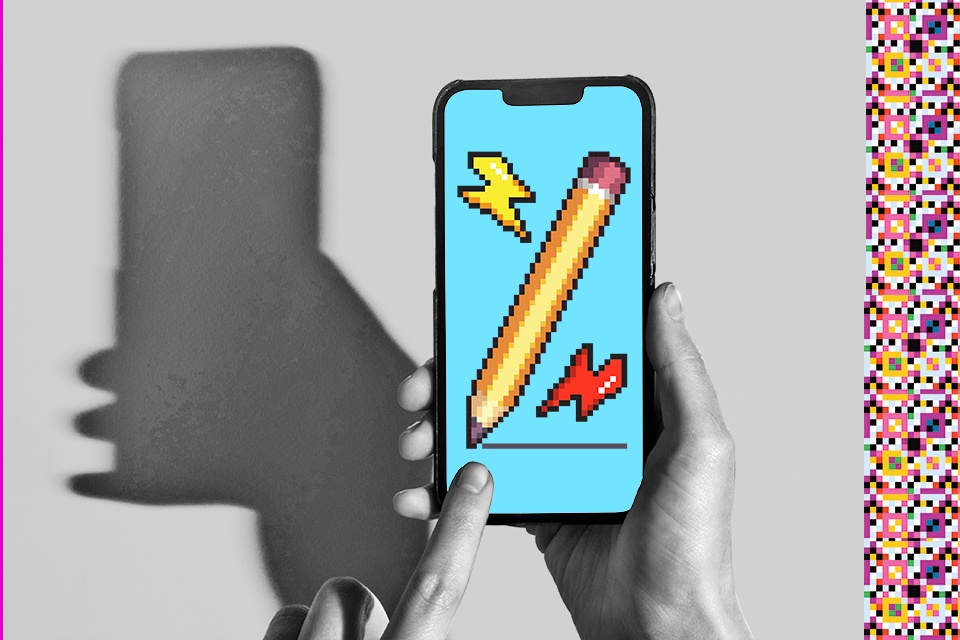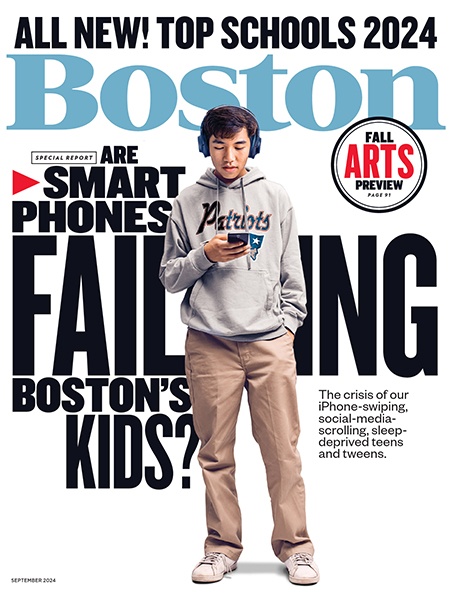Are Smartphones and Screens Good or Bad for Alternative Learners?
We asked two experts to parse the benefits and drawbacks of digital devices for students who learn differently.

Photo by Getty Images. Illustration by Benjamen Purvis.
As part of our Top Schools 2024 special report about kids and cell phones, we’re exploring the advantages of screens and social platforms for students with unique learning styles. Here, experts Rachel Parker, director of innovation and instructional technology at the Carroll School, and Devorah Heitner, author of Growing Up in Public: Coming of Age in a Digital World, help us parse the benefits and drawbacks of digital devices for students who learn differently.
How can digital devices be educationally helpful for nontraditional learners?
“My catchphrase is: Allow a student to be a creator rather than a consumer. I think the part of social media and video games that people are afraid of is the consumption, not really the creation. Let’s take Minecraft: Minecraft is such a creative game, building and creating and modifying. To me, that’s the most important distinction when thinking about technology: Is the child creating on this technology? Or are they just consuming? Are they passive, or are they engaged? Really strong, deep learning happens in creative moments.” —Rachel Parker
In what ways can digital devices be emotionally helpful for nontraditional learners?
“No child’s learning profile is the same. But when we think about dyslexia, for example, starting to write a paragraph can be so daunting and anxiety-provoking for our students that a lot of them just can’t get started. Getting started oftentimes is the biggest hurdle to being able to access content and create content. By having tools that allow them to speak out loud so that they don’t have to be writing, they’re not hitting that block and can actually communicate even more valuable and creative information.” —Parker
Will my child with learning or behavioral differences interact with social media differently?
“Impulsivity might be part of ADHD for some kids. Social media, unfortunately for all of us, kind of encourages impulsivity and a quick reaction. The danger, especially for a young person, would be that they might respond in a way that might blow up their social network. They might respond in a way that they think is funny in the moment, or they might get really angry, and it could be a problem for them. Another example is kids who miss some nuance. Some kids might do better because, in some ways, a text is more explicit than reading expressions, but there also might be kids who miss some of the hidden rules of interactions: You don’t respond too quickly, or you don’t respond this many times. That could be socially costly for them.” —Devorah Heitner
Will smartphones help or hurt my teen with social anxiety?
“Every time I hear from a parent who says, ‘My kid has no friends; they’re only gaming with other kids,’ I wonder: If that kid didn’t have gaming, would they then be out at a million social events engaging, or would they actually have nothing? That’s the question: What is social media replacing? If the kid would be out engaging with people in person but instead is gaming 24/7, that wouldn’t be ideal. But what if that’s a kid who would just have been doing nothing with other people? Then the games are a bridge and an important part of their life. It’s important to also think about: How can we connect what young people might be doing in these spaces to other skills? If your kid is watching a lot of YouTube cooking videos, could they be learning to cook? Could they be translating that interest into a useful life skill?” —Heitner
What are the best apps for kids and teens who thrive with hands-on learning?
“For educational technology and creativity, Scratch and Scratch Jr., which are entry-level programming languages. They were specifically designed for young children, and they’re very well designed for children who can’t read. You’re creating stories and games, programming on a 2-D screen. The other one is Tinkercad 3-D-modeling software. You basically take shapes, manipulate them, and you can 3-D-print them. They’re free, and they’re designed specifically for children in educational settings.” —Parker
Should I worry about my child disclosing too much online?
“I think parents worry that kids are revealing too much, but they’re actually revealing within the norms of their own social community: kids coming out online, for example. A lot of kids will come out online, and parents are like: ‘They’re only 13. What if they change their mind?’ A parent might not recognize that maybe lots of kids in middle school are taking that step; social costs may be much lower, and the benefit may be higher in terms of inclusion and support.” —Heitner
First published in the print edition of the September 2024 issue as part of an annual Top Schools 2024 package, with the headline, “Alternative Learners 101.”

Are Smartphones Failing Boston’s Kids?
- The Sobering Truth About Kids and Smartphones
- How Schools Are Regulating Smartphones—Or Not
- Studies Show…
- Do You Give a Seventh Grader a Smartphone? (Coming soon)
- The Case For
- The Case Against
- Ask the Experts
- Also, in this issue:

